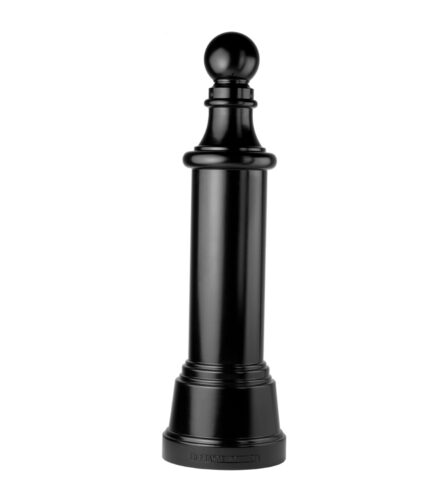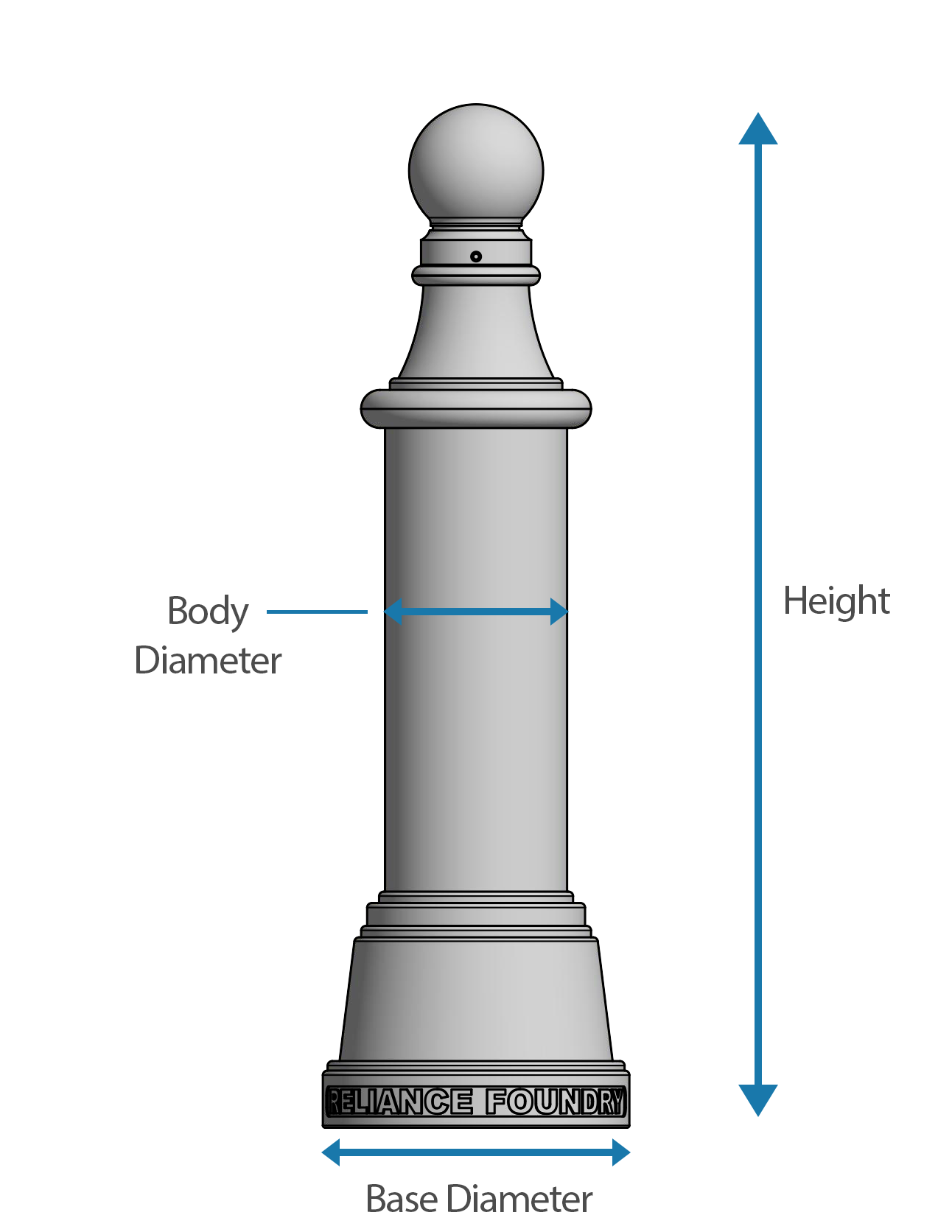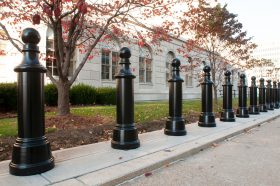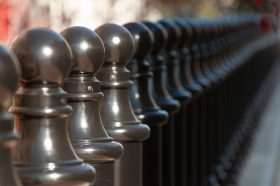Gene Snyder Courthouse
Louisville Kentucky’s Gene Snyder Courthouse was originally built in 1931 as the Post Office, Court House, and Custom House. Louisville, over the previous decade, had become a major economic hub for the state, and the grand courthouse was constructed to serve as a center for the Western district. Supervision Architect of the US Treasury Department, James A. Wetmore, oversaw the planning for the formal building, constructed in the Classical Revival style. Classical Revival was a common style for government buildings during that period. The Court House specifically emulated the US Treasury Department Building, completed in 1910.
The Court House was renamed in 1986 to honor Gene Snyder, a long-serving Kentucky politician and Congressional Representative. During this time the Post Office was moved out and the interior space was renovated. This rehabilitation won the building many stewardship awards for successful historical preservation. In 1999, the Courthouse was listed in the National Register of Historic Places.
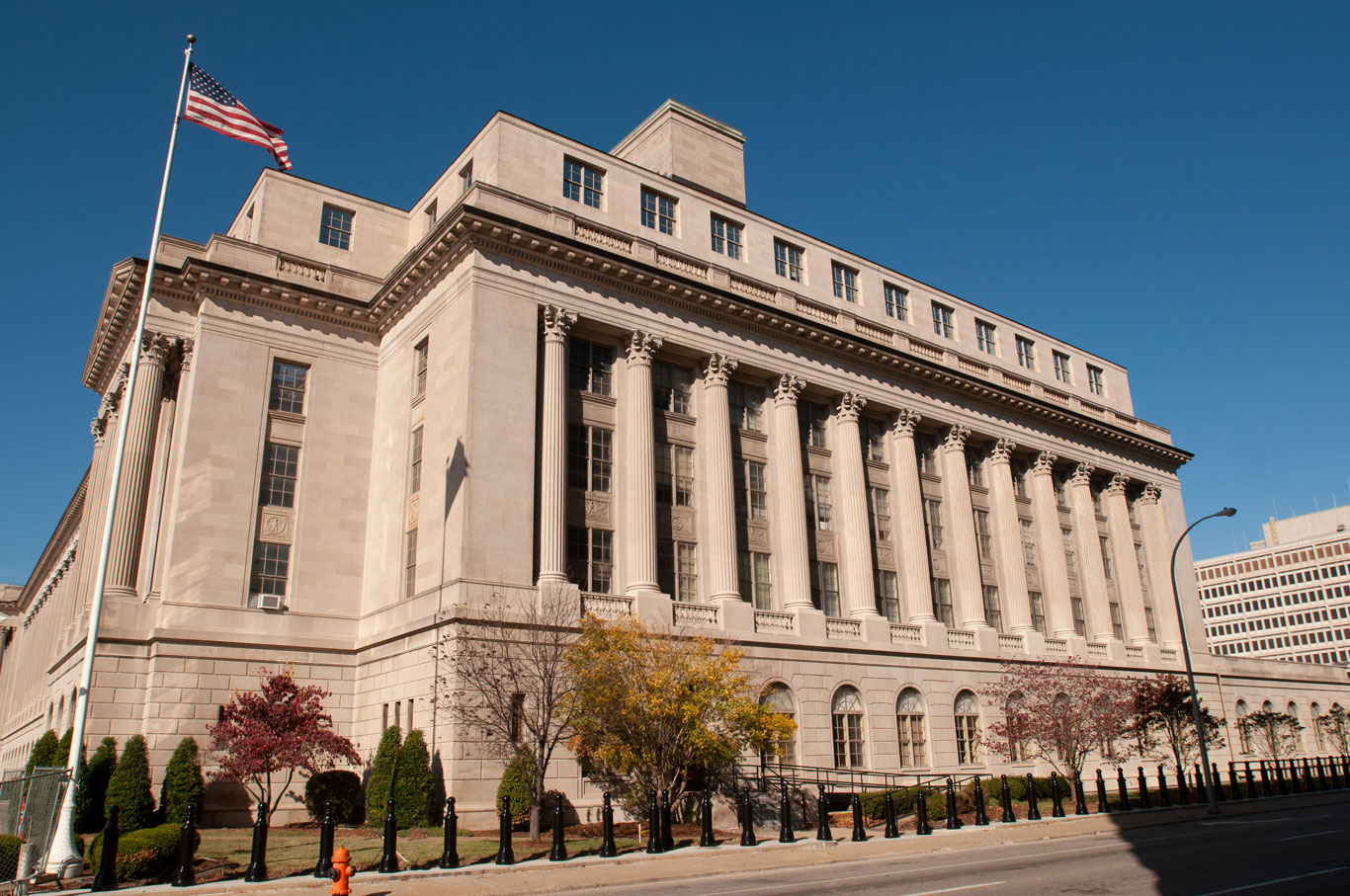
After the terrorist attacks of 9/11, government buildings that were considered potential targets committed to upgrading site security. These security plans included perimeter protection against vehicle attack. FEMA guidelines, released in 2005, provided specifications for walls, berms, trapping pits, and hardened site fixtures to help with the design of this protection. The US Marshals, responsible for Gene Snyder, created a protection plan for the Courthouse.
The grounds are not large around the Courthouse: the building sits close to the sidewalk, beside six lanes of vehicle traffic and two major intersections. Protection against vehicles is needed but a solution could not take up too much space. Foot traffic must move freely down the sidewalk. If there should be an emergency in the building, like a fire, evacuation routes should be clear.
Steel-pipe bollards, deep embedded and filled with concrete, were chosen to protect the courthouse since they offer protection against vehicles but do not block people. Such security bollards are strong but unsightly. Their look would not be in keeping with the award-winning historical preservation at Gene Snyder. To cover them, the US Marshals chose the R-7593 architectural bollard.
This 52" bollard’s traditional look is based on classical cannon bollards. In the 17th and 18th centuries, spent or captured cannons were buried to create posts or guards. These were often placed around government fortifications. The bollards around the Gene Snyder Courthouse offer a stylized version of these cannon bollards, in keeping with this tradition. The spherical cap emulates a cannon’s cascable knob, and the base sits like a flanged muzzle end on the ground, with decorative molding reminiscent of a cannon’s reinforcement rings.
Traditional cannons were made of bronze or cast iron. However, older cannon bollards did not need to protect against modern vehicles. The cast iron used in old field artillery is hard and somewhat brittle: if a car or truck hit an old cannon bollard, there is a chance it might shatter into small pieces, creating shrapnel. Modern bollards, like Reliance Foundry’s R-7593, are made with ductile iron. This material is less likely to shatter—instead, it is more likely to deform or dent upon impact. Even with these safety upgrades, the weighty presence and historical significance of cast iron is maintained, providing the classical look so important to this historic site.
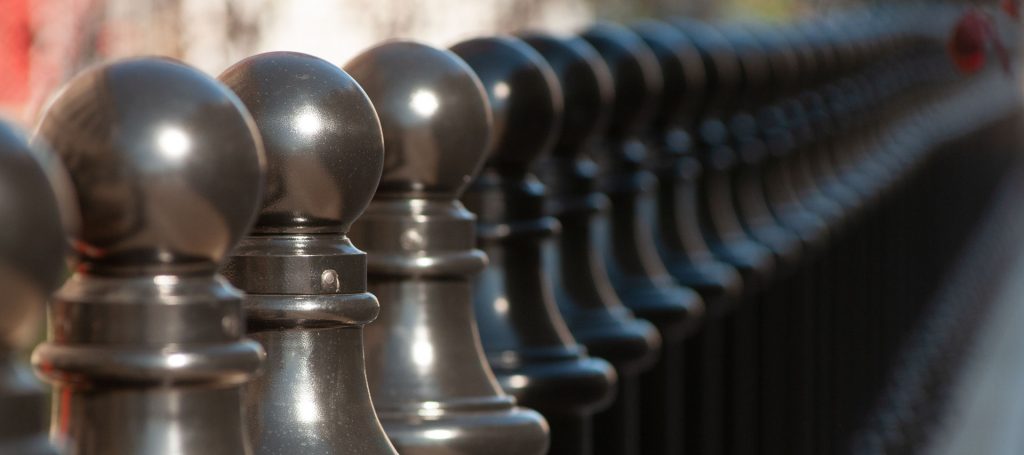
R-7593 DECORATIVE BOLLARD
|
Height |
53-3/4 in |
|
Weight |
259 lbs |
|
Body Diameter |
9-1/2 in |
|
Base Diameter |
16 in |
|
Material |
Ductile Iron |
|
Optional Interior Pipe Height Max. |
36 in |
|
Optional Interior Pipe Diameter Max. |
8 in |

